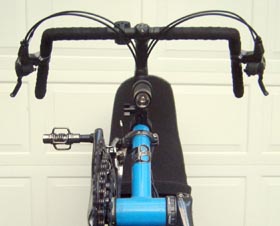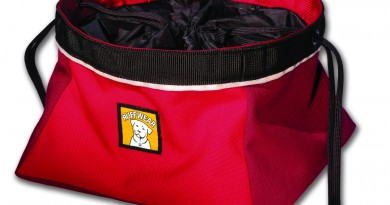It’s All About Your Bike
By
Stephen Wark
Posted May 31st, 2009

Photo by Stephen Wark
When people learn that my bicycle is worth more than my car, surprise is the most common expression I see cross their faces, followed closely by pity for my wife. Now granted, my ’99 VW may be a bit long in the tooth, but it still has plenty of life left, just as my bike does. That’s why I eventually dispatched the temptation to buy a new bicycle, instead opting to refit my recumbent with geometry and performance-changing components.
As a nation, we tend to discard items that are old and reliable, in favor of new, often more expensive things, and bicycles are no exception. I must admit that the call of carbon was strong, offering lighter weight and a stiffer feel. Thoughts of higher speeds, lower ride times, and straight up sex appeal clouded my vision for quite some time. But when the fever broke, I knew that repurposing my steel frame was my ticket to a custom ride, providing me with a challenge most riders will not experience.
When most of us buy a bike, it is a function of the cold economics of a market—price point rules the day. Unless you are Lance Armstrong, your bike is likely the product of a business calculus that will capture the most of a market segment. Creating an entirely customized steed can be a liberating experience, pitting you against the best designers on the planet. When I decided to rebuild instead of buy new, I learned a tremendous amount about how to have fun, spend less, and end up with a one-of-a-kind bike. Here are some of the takeaways from my experience:
BUILD WITH THE END IN MIND
Rather than jump right in with tools spinning, I methodically studied different types and styles of bikes. It took a while for my vision to form, but when it did, I had a clear picture in my mind’s eye of what my bike would look like. On my short list were better and lighter components; more streamlined aerodynamics; design that would simplify the ride; improved aesthetics; and a signature fit and finish that would make this a “one of a kind” ride. By the end of the project, my bike exceeded my expectations.
UNDERSTAND INNOVATION AND RISK
A project like this is not for the faint of heart. For example, changing the geometry of my bike was a big gamble that could have resulted in failure. At one stage in the project, I discovered why advice is cheap—the “new” front fork and wheel interfered with the crank on tight turns, and my on-line advisors told me I should just live with it. Not this kid. Moving to a shorter crank, coupled with a customized, machined crown race from Santana of California allowed me to increase the clearance ever so slightly, and eliminate the problem. The point here is to understand your tolerance for risk and being innovative up front. While I took a “why not” approach, the price tag was a new crank, machined parts, and lots of stomach acid. The upside is I now understand why shorter cranks are all the rage, and my knees haven’t felt this good in years.
FIND A GREAT MECHANIC
Don’t settle for merely competent. You want a problem solver who is patient; one who takes pride in his or her work. I was fortunate that Rich from Earl’s Cyclery could see what I was striving for, and was willing to put up with my endless “what if” scenarios. In the end, we were both proud of the result, with talk quickly transitioning to the “what’s next” list.
PUT YOUR BIKE ON A DIET
If I’m honest with myself, losing 20 pounds and training harder would have made me faster than the 7 pounds my bike shed during the refit. Okay, but… lighter weight components are usually machined better. But… lighter weight components provide a smooth and buttery performance. But… less stuff on the bike means fewer points of potential failure. And a final but… hand selecting your own components is a very gratifying experience, comparable to chiseling marble. I learned that the minimalist philosophy works, as I shed unnecessary components and grams and ended up with a bike that looked and performed cleaner than before.
BUY LAST YEAR’S COMPONENTS
With its sinewy carbon weave and understated architectural lines, Shimano’s new Dura Ace Carbon crank was an object of my desire for weeks. In the end, I simply could not justify spending $1,600 on a crank, when last year’s Ultegra was a fraction of the cost, and still an improvement over what I had. Frugality won out on many component choices, and I scoured the Internet and secured the past season’s models, saving in one case over 75 percent of the price of the newest generations. There will always be a next generation, and sometimes old school is the best school.
With a summer of experience on my new ride, I know now that I made the right choice when I decided to refit my bike. Having watched the parts become more than their sum, I have a deeper satisfaction of how a bike works, and what it takes to make it truly yours. The next time you hear the sirens’ call of exotic materials, components, and marketing, resist their song and consider your own customization project. Now… I wonder how my bike would look with a fresh coat of paint…
Stephen Wark lives in Vermont with his wife and two daughters where he enjoys three-season cycling (read: fair weather), year-round hiking and backpacking, sailing, and cross-country skiing. He has been an avid ice climber and mountaineer, and is now embracing the art of lightweight backpacking. His current quest is to summit all 46 High Peaks of the Adirondacks.

